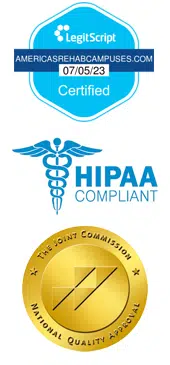Breakthrough withdrawal symptoms are often simply referred to as withdrawal symptoms and will refer to specific symptoms related to the substance causing withdrawals. Breakthrough symptoms will be different for those no longer using benzodiazepines compared to someone who has stopped drinking alcohol.
When it comes to addressing breakthrough withdrawal symptoms, medically assisted detox is strongly suggested as some of the symptoms can be life-threatening if not treated correctly or be uncomfortable enough that individuals will instead choose to go back to substance abuse.
What Does Medically Assisted Detox Mean?
A medical detox is often the beginning of addiction recovery treatment. It is a supervised period in which individuals are placed under the care of medical professionals to address symptom impacts to both the mind and body. Without this support, many recovering individuals will rebound back to their standard substance use or suffer from severe side effects that could have been minimized or eliminated during a medical detox.
Choosing to abruptly quit taking drugs or stop drinking alcohol “cold turkey” is never recommended especially if there is a long history of substance abuse. This is due to the dependencies created by the body needing to be slowly broken down before internal functions can resume independent from the presence of drugs or alcohol.
Breaking Down Detox and Symptoms by Substance
The medical detox process will vary based on each individual, the amount of substance being used and how long it’s been regularly ingested. The withdrawal symptoms experience will also differ, even if certain substances share many of the same symptoms. The detox process and symptoms being addressed can be split up by substance for a general scope of what to expect.
Alcohol Symptom Timeline
The breakthrough symptoms of alcohol withdrawal can start showing as early as six hours after the last drink. They include:
- Tremors
- Anxiety
- Headaches
- Insomnia
- Nausea and/or vomiting
- Excess sweating
Each of these symptoms can vary in strength depending on consumption levels. The next 12-72 hours are the most severe symptoms to expect.
- Hallucinations
- Seizures
- Increased heart rate
- Fever
- High blood pressure
- Delirium tremens which creates delusions and vivid hallucinations (in severe cases, only 5% of patients experience this)
In many cases, the medical use of benzodiazepines are the key to reducing symptom severity. It acts as a depressant to slow down the processing speeds of the central nervous system, negating the state of overdrive the system enters during withdrawals. This helps eliminate the more severe breakthrough symptoms such as seizures and organ failure.
Opioid Symptom Timeline
While alcohol has the shortest yet most severe withdrawal timeline, other commonly abused substances can have symptoms lasting for weeks.
The first symptoms typically start within 24 hours and include:
- Irritability
- Paranoia and anxiety
- Insomnia
- Excess sweating
- Muscle aches and pains
- Increased sinus activity
Symptoms that can last for up to three weeks include:
- Nausea and abdominal cramping
- Vomiting and/or diarrhea
- Dilated pupils
When these symptoms are mild, they can be treated with standard pain-relief and stomach medications. For more severe cases of opioid dependency, doctors will administer a replacement drug that triggers the same receptors as opioids without the euphoric side effects that lead to initial abuse. The dosage can be tapered off to completely eliminate withdrawal symptoms when done properly.
Benzodiazepine Symptom Timeline
Being slow-acting, benzodiazepines
- Insomnia
- Irritability
- Tremors
- Muscle aches and spasms
- Migraines or headaches
- Increased heart rate
- Nausea and/or vomiting
- Panic attacks
- Trouble concentrating or accessing memory
- Seizures
Even though the symptoms can last longer, benzo detox treatment is easily managed through the tapering method where a stand-in medication lets the body naturally break its dependence on the drug.
Stimulant Symptom Timeline
Stimulants include methamphetamines, cocaine and even prescription amphetamines such as ADHD medication. The window for symptoms is shorter, typically lasting no more than five to six days. Since stimulants have greater impact on the central nervous system, the withdrawal symptoms tend to be more psychological in nature, including:
Withdrawal from stimulants is characterized by a dysphoric mood—feeling unhappy—and the presence of two or more of the following symptoms:
- Irritability
- Anxiety
- Slow or slurred speech
- Delayed responses
- Slowed speech
- Trouble focusing
- Reduced heart rate
- Hallucinations and delusions
- Paranoia and nightmares
- Depression
- Increased appetite
- Sudden weight loss
- Irregular sleep patterns
- Muscle ache
Stimulants have a much shorter half-life meaning their presence in the body ends much sooner compared to other drugs. As such, tapering is typically not used and instead a focus on managing each symptom is the approach. Mental health professionals also play a much larger role in stimulant detox to keep patients as present and comfortable as possible.
Regardless of the substance being abused or the severity of addiction, seeking medical detox to manage breakthrough withdrawal symptoms is crucial to long-term success of treatment. We encourage anyone suffering from substance abuse to contact us for a private, no-obligation consultation to see how America’s Rehab Campuses can help.

